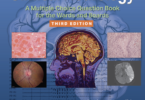
An overview of the book “Congenital Heart Disease: A Clinical, Pathological, Embryological, and Segmental Analysis” authored by Richard Van Praagh. It emphasizes the following key points:
Authoritativeness: Dr. Richard Van Praagh, the author, is credited as the originator of the standard nomenclature for Congenital Heart Disease (CHD). His approach to the segmental classification of CHD, established in the 1960s at Boston Children’s Hospital, is still widely used today in the medical field.
Content Coverage: The book covers the history, anatomical features, and physiological consequences of CHD comprehensively. It addresses the signs, symptoms, and clinical manifestations of malpositioned, malformed, or absent cardiovascular structures using both traditional and state-of-the-art technology.
Van Praagh System: The book is structured around the Van Praagh system of three-part notation. This system succinctly describes the situs of visceroatrial structures, the orientation of the ventricular loop, and the position and relation of the great vessels, aiding in clear communication among various medical specialists involved in diagnosing and managing CHD.
Diagnostic Aid: It demonstrates how the Van Praagh approach aids in interpreting and reporting findings through various cardiac imaging techniques such as CT, MR, and ultrasonography, including the specialized field of fetal cardiac imaging.
Pathological Anatomy: The book presents in-depth knowledge of pathologic anatomy relevant for pediatric and adult cardiologists, radiologists, echocardiographers, interventionists, pediatric cardiac surgeons, and adult congenital heart surgeons. This knowledge is crucial for accurate diagnoses and successful management of complex congenital heart diseases.
Visual Support: With over 550 high-quality images, the book provides visual aids to assist in the recognition and visualization of various cardiac malformations.
Expertise Sharing: Written by a world-renowned authority in congenital heart disease, the book shares the expertise and teachings of Dr. Richard Van Praagh.
Interdisciplinary Collaboration: It emphasizes the importance of collaboration between various medical disciplines involved in patient care, including surgeons, radiologists, cardiologists, pathologists, and pediatricians.
Enhanced eBook: The book includes an enhanced eBook version that provides access to the text, figures, and references from the book on multiple devices







